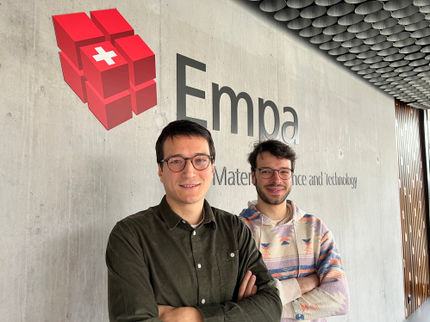Sweet Nanoparticles trick Kidney
Researchers engineer tiny particles with sugar molecules to prevent side effect in cancer therapy
Advertisement
In the past decade nanomedicine has contributed to better detection and treatment of cancer. nanoparticles are several 100 times smaller than the smallest grain of sand and can therefore easily travel in the blood stream to reach the tumor. However, they are still too big to be removed by the kidneys. Since several doses of nanoparticles are necessary to treat a tumor, over time the nanoparticles can accumulate in the kidney and cause irreversible damage. In a study published in Biomaterials, materials scientists at the University of Freiburg led by Prof. Dr. Prasad Shastri from the Institute of Macromolecular Chemistry now present a natural solution to this problem: they built nanoparticles with the carbohydrate polysaccharides, which led to the excretion of the particles.
In nature viruses such as the herpes simplex virus-1 and the cytomegalovirus, which are able to pass through the kidney filtration apparatus despite their large size compared to nanoparticles. Shastri and his team identified that both viruses presents sugar molecules on their surface. Inspired by this observation, the scientists engineered nanoparticles containing polysaccharides. These carbohydrates are frequently found in the human tissue environment. Using a real-time imaging technique, which they have established in their laboratory, the team investigated in a mouse model the fate of these nanoparticles. They observed that the polysaccharide-enriched nanoparticles readily pass through the kidney and are excreted with the urine within a few hours after intravenous administration. The decisive factor for the researchers was that the nanoparticles continued to act as intended and were still able to target tumors.
“The ability to combine tumor accumulation and kidney clearance in the same nanoparticle represents a tipping point in ensuring that nanomedicines can be safely administered” says Shastri. “Our nature-inspired approach enabled us to trick the kidney environment to let nanoparticles pass through” adds Dr. Melika Sarem who was a co-author of the study.
Original publication
Wyss, P. P., Lamichhane, S. P., Abed, A., Vonwil, D., Kretz, O., Huber, T. B., Sarem, M., Shastri, V. P. (2020): Renal clearance of polymeric nanoparticles by mimicry of glycan surface of Viruses. In: Biomaterials 230 (2020) 119643. DOI: 10.1016/j.biomaterials.2019.119643






















































